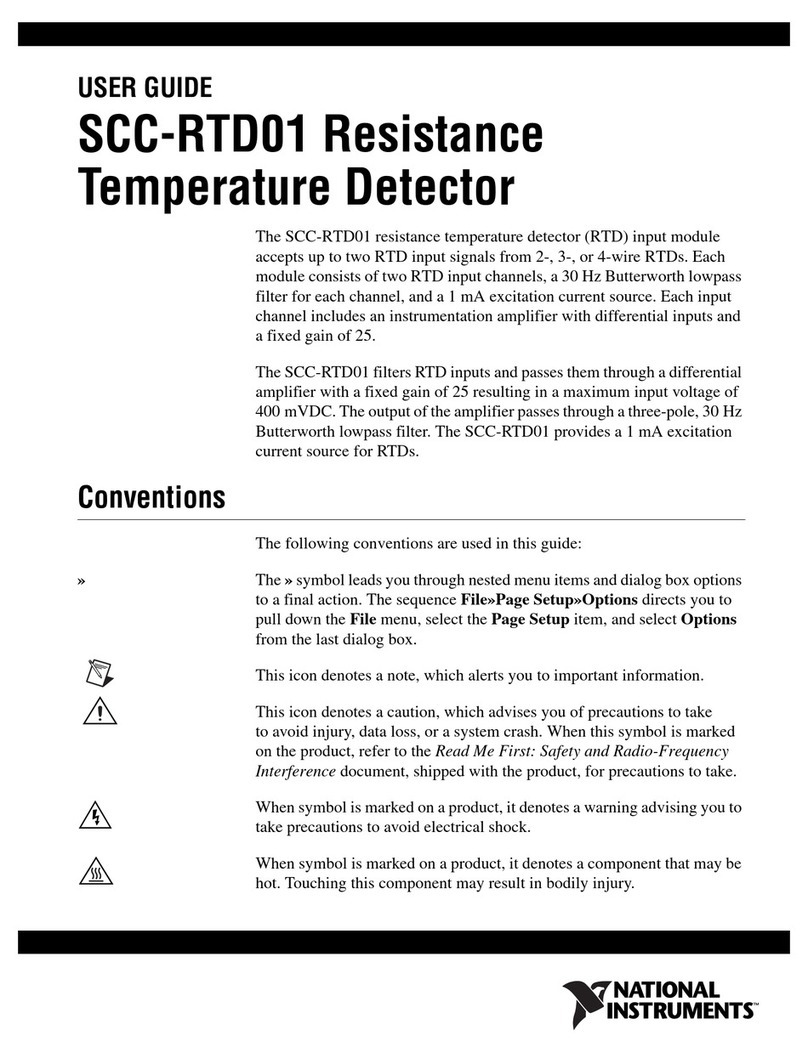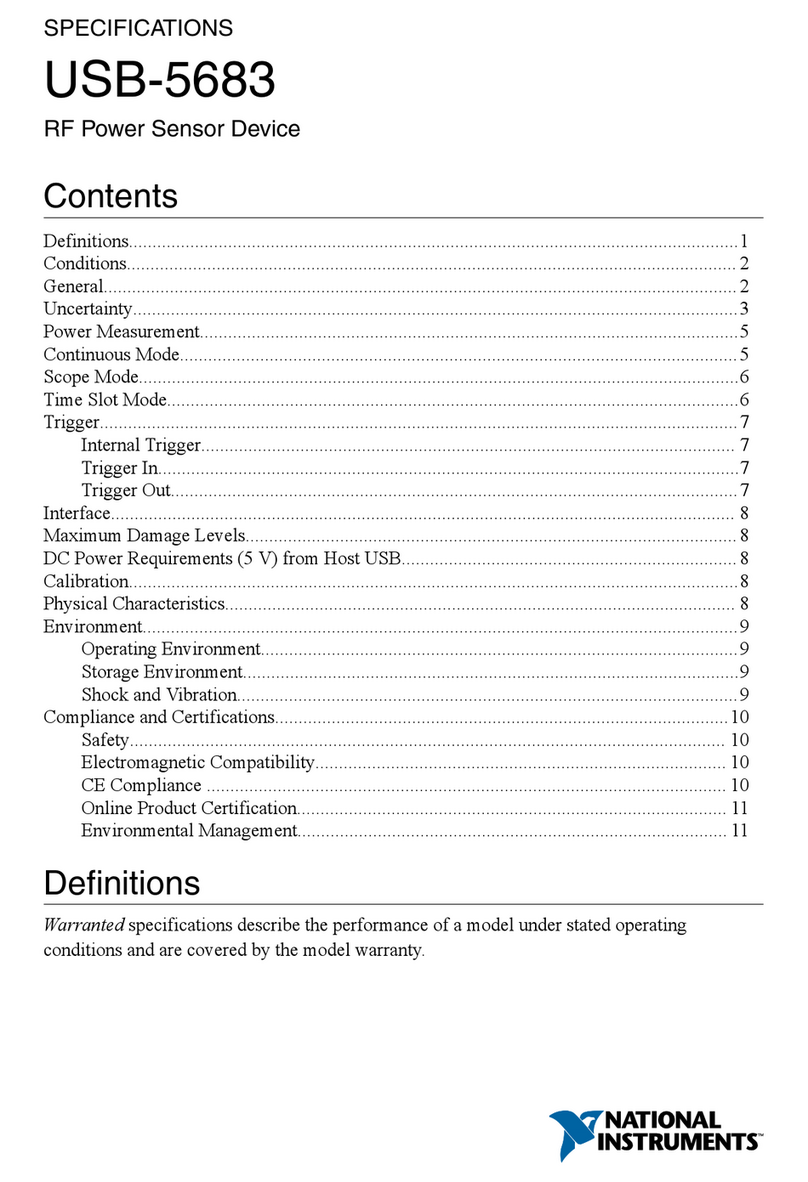
USER GUIDE
SCC-RTD01 Resistance
Temperature Detector
The SCC-RTD01 resistance temperature detector (RTD) input module
accepts up to two RTD input signals from 2-, 3-, or 4-wire RTDs. Each
module consists of two RTD input channels, a 30 Hz Butterworth lowpass
filter for each channel and a 1 mA excitation current source. Each input
channel includes an instrumentation amplifier with differential inputs and
a fixed gain of 25.
The SCC-RTD01 filters RTD inputs and passes them through a differential
amplifier with a fixed gain of 25 resulting in a maximum input voltage of
400 mVDC. The output of the amplifier passes through a three-pole, 30 Hz
Butterworth lowpass filter. The SCC-RTD01 provides a 1 mA excitation
current source for RTDs.
Conventions
The following conventions are used in this guide:
»The »symbol leads you through nested menu items and dialog box options
to a final action. The sequence File»Page Setup»Options directs you to
pull down the File menu, select the Page Setup item, and select Options
from the last dialog box.
This icon denotes a note, which alerts you to important information.
This icon denotes a caution, which advises you of precautions to take
to avoid injury, data loss, or a system crash. When this symbol is marked
on the product, refer to the Read Me First: Safety and Radio-Frequency
Interference document, shipped with the product, for precautions to take.
When symbol is marked on a product, it denotes a warning advising you to
take precautions to avoid electrical shock.
When symbol is marked on a product, it denotes a component that may be
hot. Touching this component may result in bodily injury.





























